Windows 11 has introduced several new features aimed at enhancing the productivity of developers. One such feature is the Dev Drive, a specialized storage solution designed to optimize development processes and boost performance.
What is a Dev Drive? A Dev Drive is a virtualized storage volume tailored specifically for development projects. Built on the Resilient File System (ReFS), it provides developers with improved control over security and storage, allowing them to focus more on coding rather than managing their environment. The Dev Drive reduces the impact of antivirus operations by deferring security scans until file operations are complete, resulting in enhanced performance.
Requirements for Setting Up a Dev Drive in Windows 11 Before creating a Dev Drive, ensure your system meets the following prerequisites: at least 8 GB of RAM (16 GB recommended), a minimum of 50 GB of free disk space, and Windows 11 Build 22621.2338 or later. The Dev Drive feature is available on all Windows SKU versions.
Setting Up a Dev Drive
You can create a Dev Drive either by using a virtual hard disk (VHD) or by resizing an existing partition. Below are the detailed steps for both methods.
Creating a Dev Drive on a Virtual Hard Disk
Step 1: Open the Settings app by pressing Win + I. In the left pane, select System.
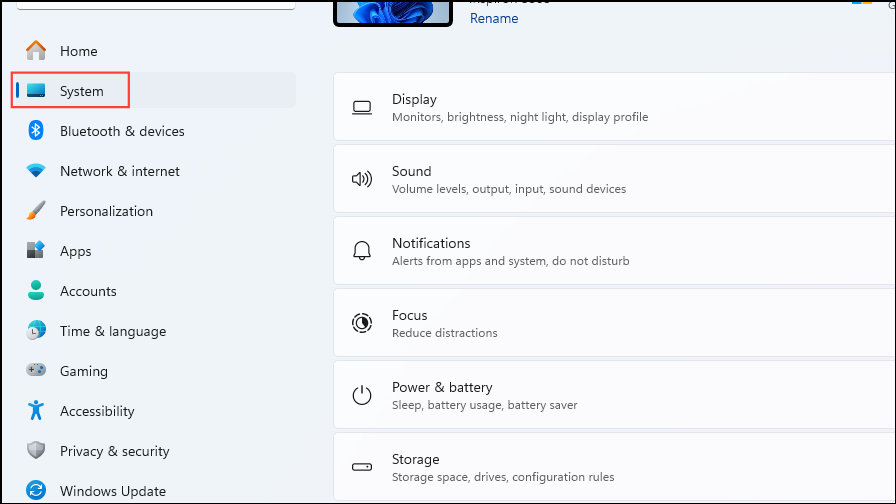
Step 2: On the right side, click on Storage.
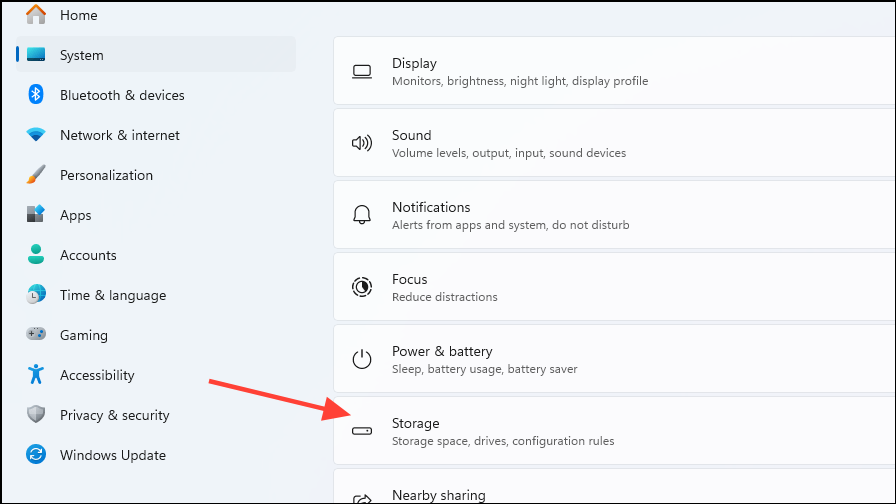
Step 3: Scroll down and click on Advanced storage settings.
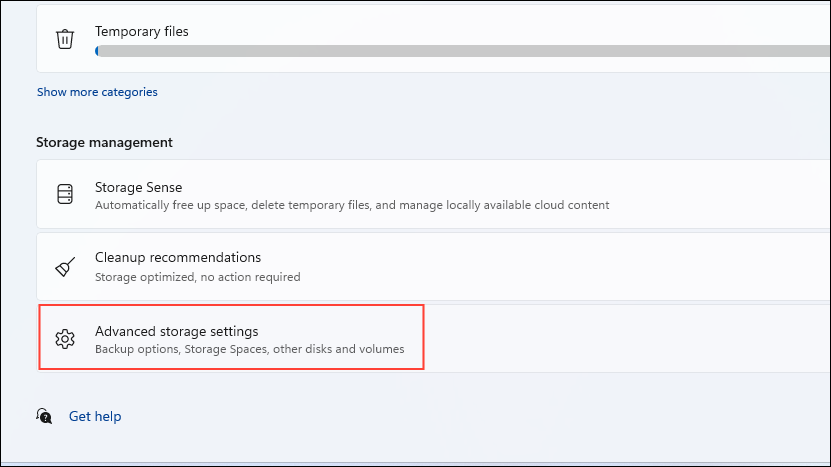
Step 4: Select Disks & volumes from the expanded menu.

Step 5: Click on the Create Dev Drive button to start the setup process.
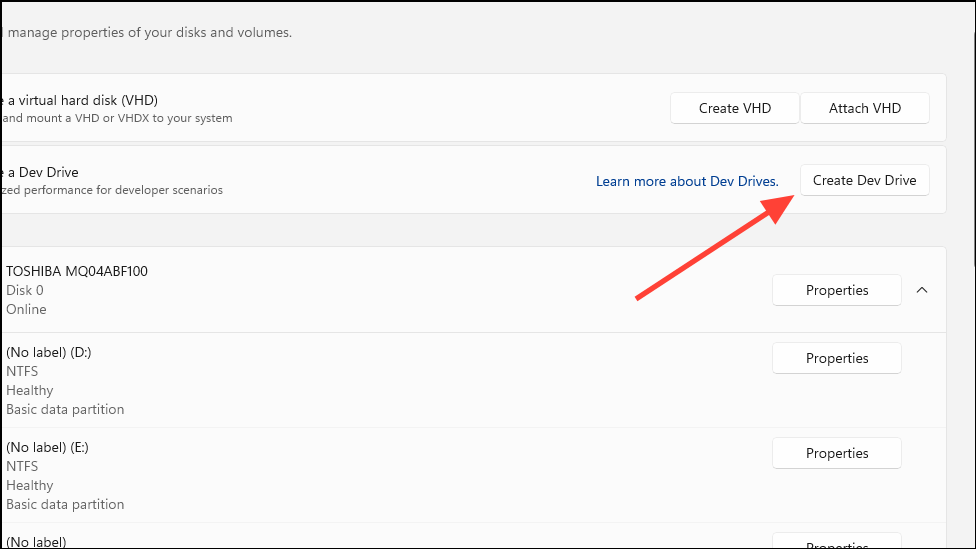
Step 6: Choose the Create new VHD option and click Next.

Step 7: Enter the details for your Dev Drive, such as the name, location, and size. You can select either a fixed size or a dynamically expanding size. After filling in the information, click on Create.
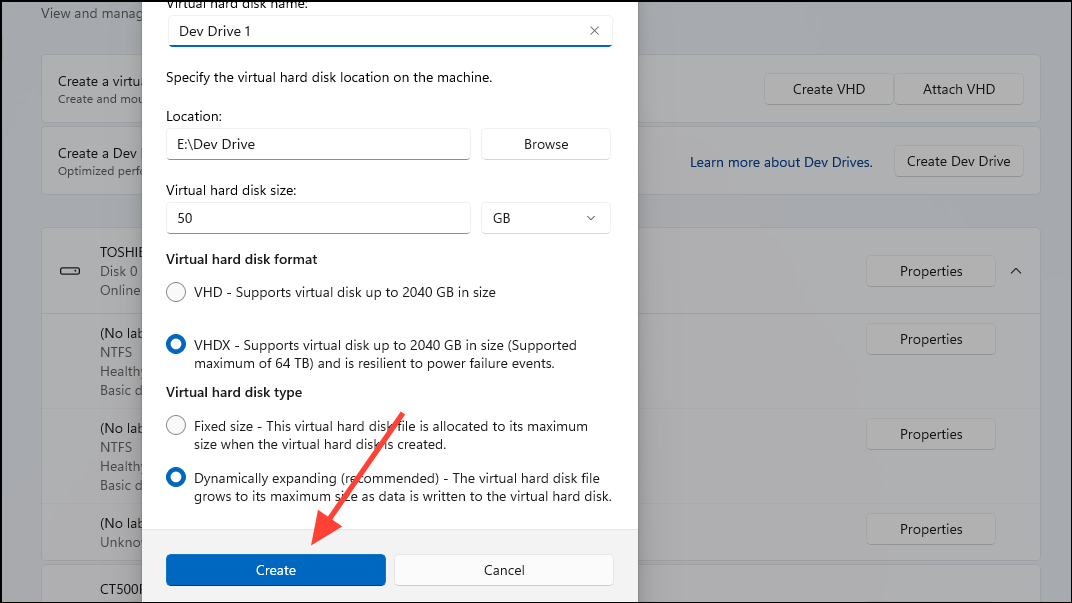
Step 8: Wait for the Dev Drive to be created. The time taken will depend on your system's hardware specifications.

Step 9: Once the VHD is created, select the partition style. The default option is GPT (GUID Partition Table), which is recommended for most systems. Click on Initialize.

Step 10: Assign a label to your Dev Drive, choose a drive letter if desired, and then click on Format to complete the setup.
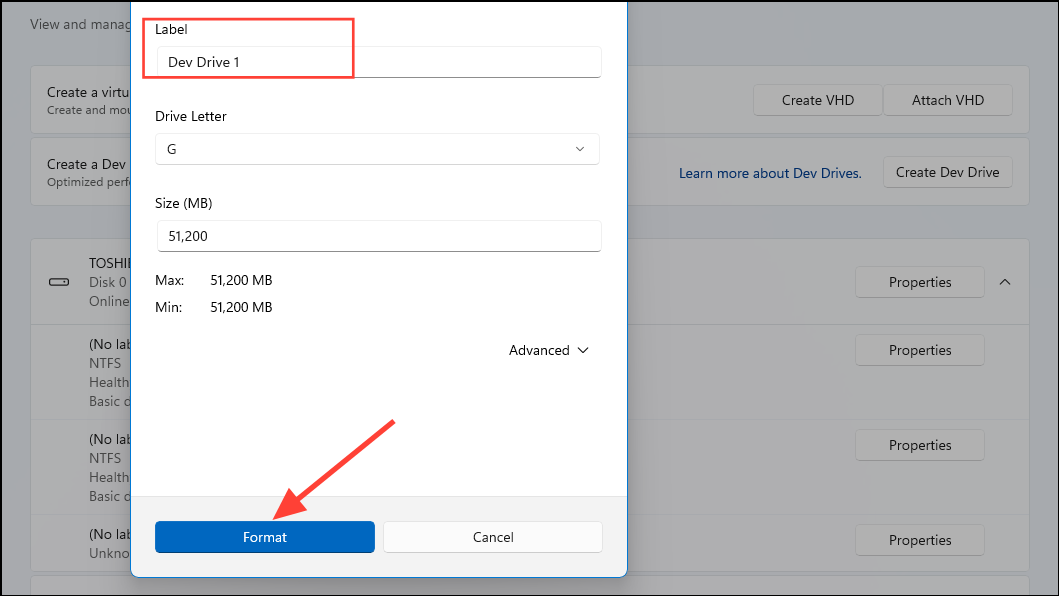
Step 11: Your Dev Drive is now ready to use. You can verify its creation by scrolling down the Disks & volumes page, where it will be listed among your other drives.

Note: The Dev Drive is intended for storing project files and packages, not for installing development tools like Visual Studio. Additionally, you cannot convert an existing drive into a Dev Drive.
Resizing an Existing Partition
If you prefer to allocate space from an existing drive, you can resize a partition to create a Dev Drive. Ensure that the drive has at least 50 GB of free space.
Step 1: In the Create a Dev Drive setup, select the Resize an existing volume option and click Next.
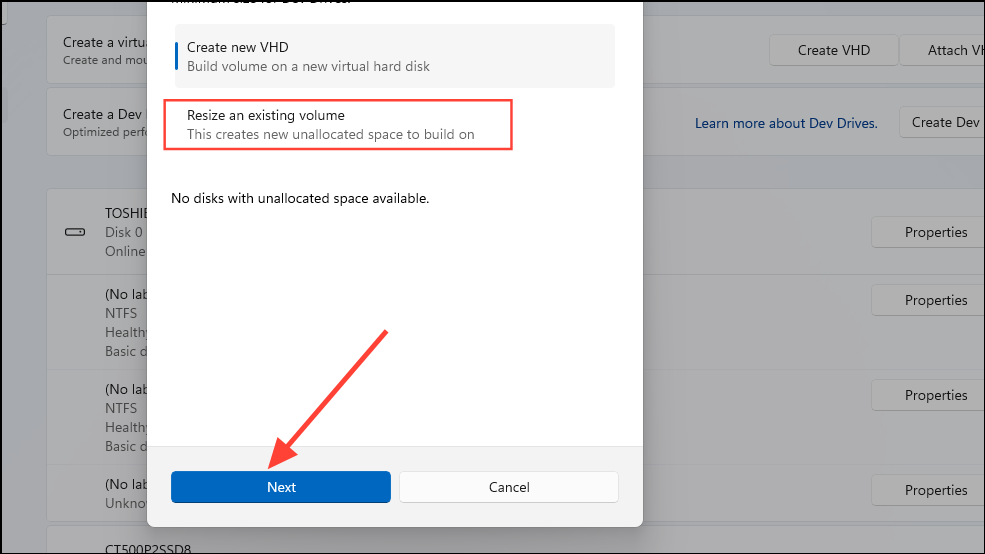
Step 2: Choose the drive you wish to resize from the list of available volumes and click Next.
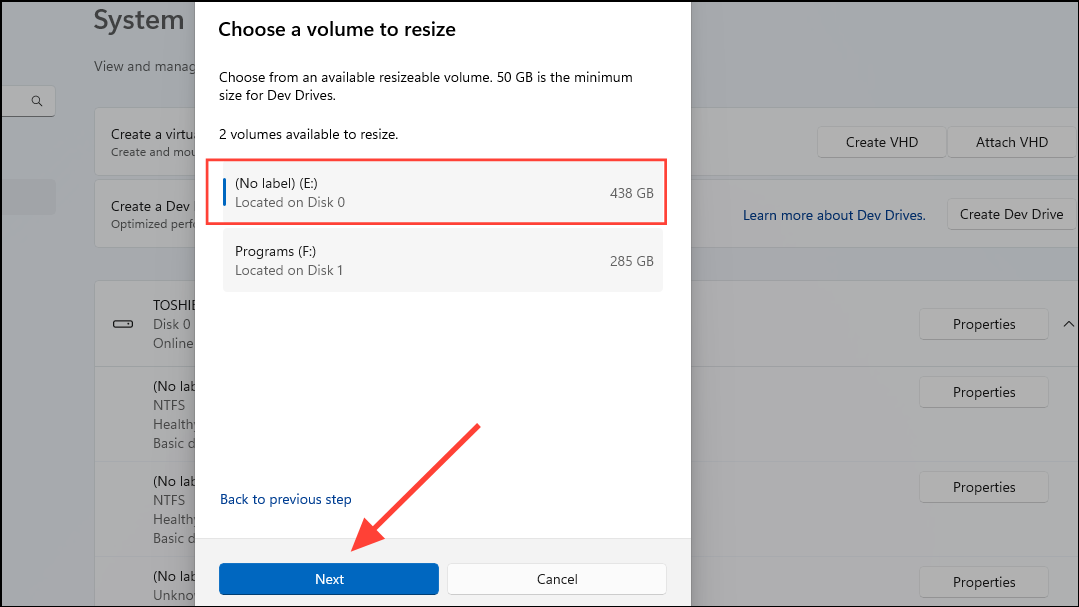
Step 3: Specify the amount of space to shrink from the selected drive, ensuring it's at least 50 GB, and then click Next.

Step 4: After shrinking the volume, assign a label and drive letter to the new partition, and click on Format.
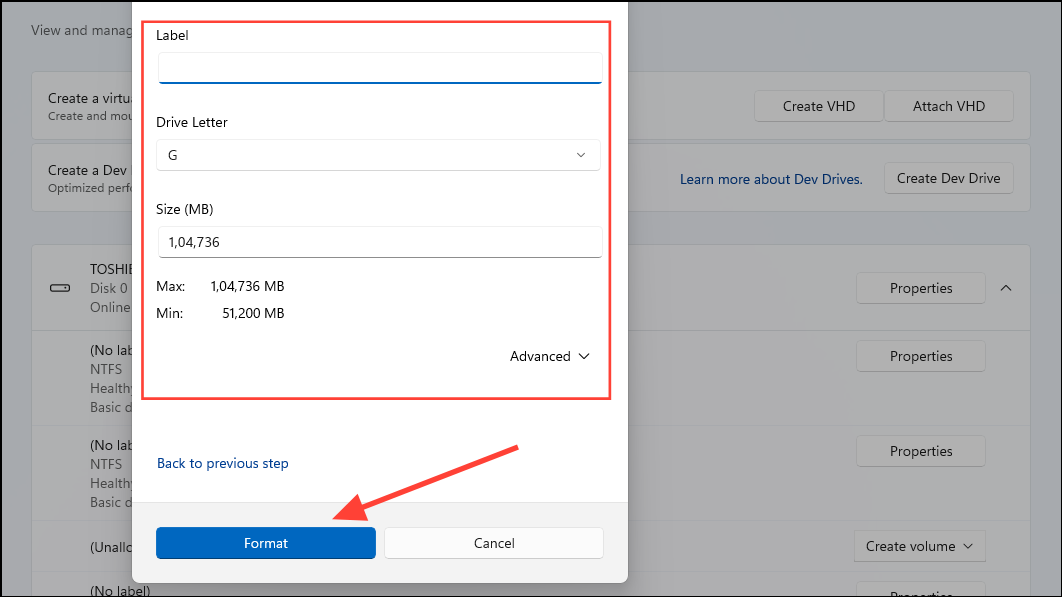
Step 5: Navigate back to the Disks & volumes page. Locate the unallocated space you've just created, select it, and click on Create new volume. Choose Create Dev Drive to proceed.

Step 6: Complete the setup by following the prompts, similar to the steps in the virtual hard disk method.
Using the Command Line
Alternatively, you can create a Dev Drive using the Command Prompt or Windows PowerShell. Administrative privileges are required for this method.
Step 1: Open the Start menu, type cmd, and select Run as administrator to launch an elevated Command Prompt.
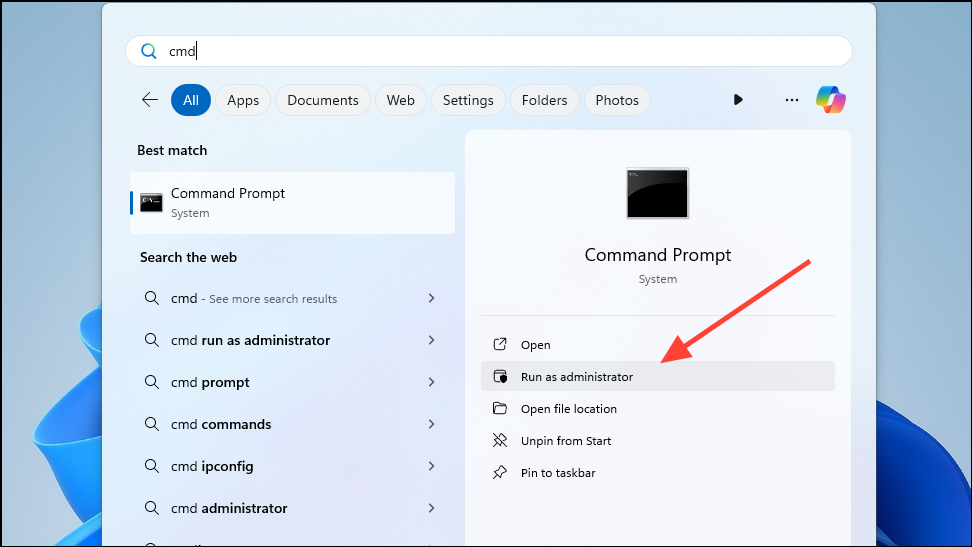
Step 2: In the Command Prompt window, type format D: /devdrv /q and press Enter. Replace D with the drive letter you intend to format as a Dev Drive.
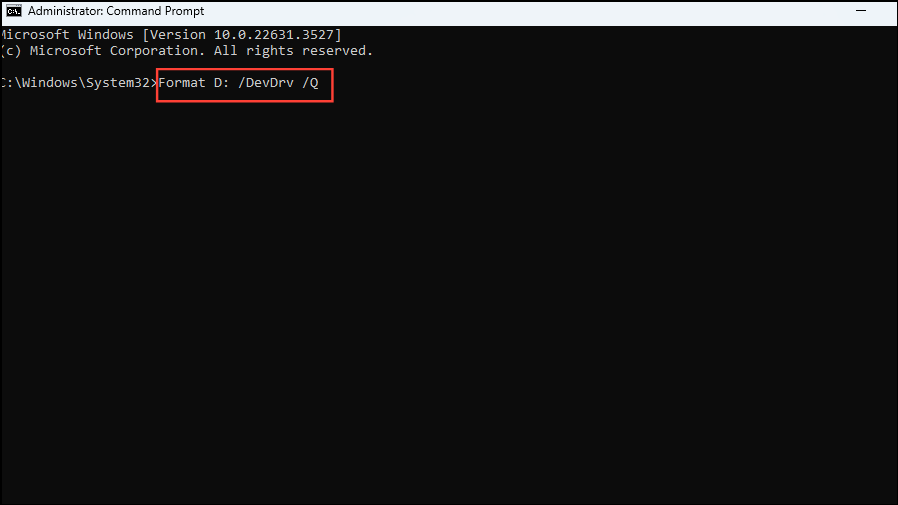
Note: You can also use Windows PowerShell with the command: Format-Volume -DriveLetter D -FileSystem ReFS -NewFileSystemLabel "DevDrive", replacing D with the appropriate drive letter.
Creating a Dev Drive in Windows 11 can significantly streamline your development workflow by providing a dedicated environment optimized for performance. Whether you choose to use a virtual hard disk or resize an existing partition, the Dev Drive offers improved efficiency and control for your development projects.
Remember that while the Dev Drive enhances performance by adjusting antivirus operations, upgrading your hardware may yield more substantial improvements for resource-intensive tasks.











Member discussion